Friction Piles: What is it,When & Where to Use[6 FAQs]
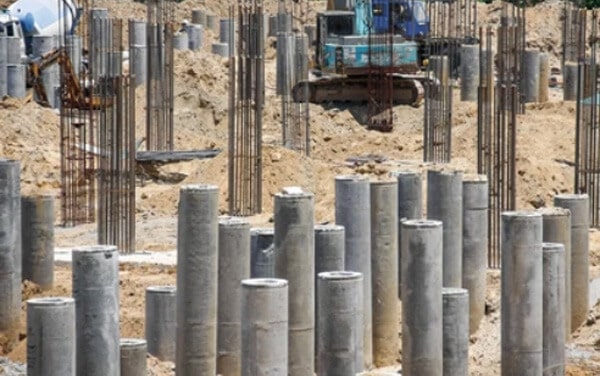
Building foundations are responsible for transferring and distributing building loads to the ground safely and regularly.
There are various types of building foundations including raft, mat, and pile foundations. Pile foundations are particularly used when the foundation soil has a weak load-bearing capacity and shear strength. In such cases, piles are used to transfer the load to deep strong strata.
Piles can be principally categorized into two types based on their load transfer mechanism: end load bearing piles and friction piles. End load-bearing piles resist loads through the bearing capacity of their cross-section and transmit load to strong strata. The load reaction on the end bearing pile is caused by strong strata.
On the other hand, friction piles resist load by developing skin friction on their surface. The cross-sectional resistance is not important in this case. The load reaction acting on the pile is caused by skin friction.
In this article, we will be discussing friction piles, how we can design them, where they are used and when they are used. Lastly, we will be also discussing the special case when negative skin friction can arise.
machine to pile cut size range 300mm-1200mm
Contents
What is a Friction Pile
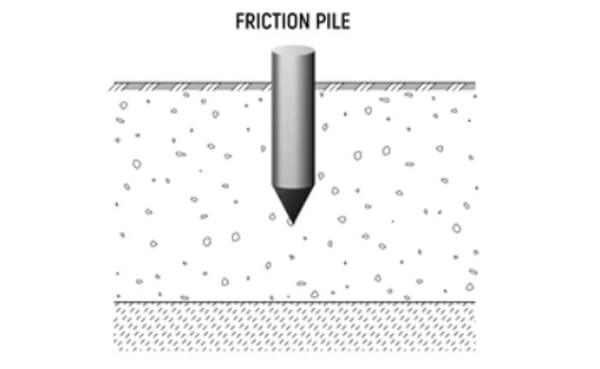
Friction piles sometimes also termed floating piles mostly resist the building loads by developing load-bearing capacity through skin shear stresses. Skin shear stresses act along the sides of the pile.
Skin friction arises as a result of adhesion or friction between the pile surface and the surrounding soil. This friction or adhesion also reduces the bulb pressure on the pile surface and all of the pile surfaces act effectively to resist the load. In the case of friction piles, cylindrical shapes pressure zone is formed around the pile surface.
When to Use Friction Pile
These piles are particularly useful in the cases when hard strata are too deep and it is becoming economically unfeasible to use end load bearing piles. In such a case friction piles are used.
Additionally, their use is also more prevalent in cases when sandy soils are encountered to greater depths. They are also used when end-bearing piles are becoming too expensive to use. This is particularly for very long-end bearing piles.
Where Are Friction Piles Used
Friction piles are most commonly adopted for large structures that have excessive load located on sandy foundations with strong strata lying very deep.
Additionally, properly compacted and consolidated sand is an added benefit.
One good example of friction pile applications is tall and superheavy skyscrapers located in Dubai. The soil of Dubai is mostly sand with strong strata lying quite deep in some cases. The world-famous Burj Khalifa has also friction piles installed in its foundation.
How To Calculate Skin Friction On Piles
Skin friction () on pile surface can be evaluated using the following formulation
Qs=∑f.As,
Where is the area of the pile surface and is unit shaft resistance. can be calculated using the following relationship:
f=Kσotanδ+ca
Where K is the earth pressure coefficient, is adhesion coefficient and is soil-pile friction angle. depends on the types of soil. For sands, it is zero while for clayey soils, it has a maximum value. K depends on the pile type, whether it is jetted pile or bored pile, or low or high displacement driven pile. depends on pile material. It is lowest for steel piles and highest for wood or concrete piles.
Different building codes also provide a specialized chart to obtain the skin pile resistance. The charts are usually nomograph relating pile area, length, material, and type of surrounding soil.
pile cutting machine for sale size range 300mm-1200mm
What Is Negative Skin Friction In Piles
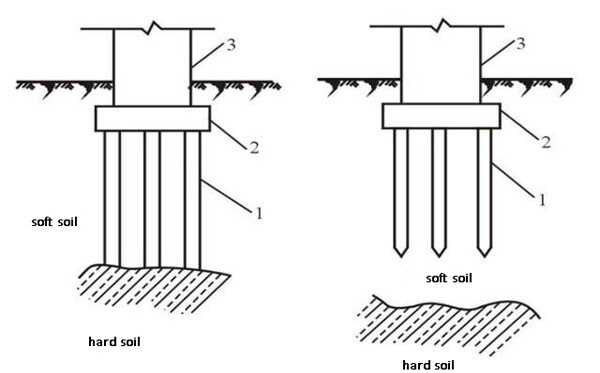
In the case of friction piles, the load is acting downwards while frictional force to resist that load acts upward. That frictional force is called skin friction.
However, in cases when pile and a part of the soil in which the pile is there is settling. And if this settlement is more than the pile settlement, it will also apply downward frictional drag on the pile surface and the force arising on the pile surface due to negative frictional drag is called negative skin friction.
In such a case when loading is applied, there will be two forces acting downward: acting load and negative skin friction. Therefore part of the load-bearing capacity of due skin friction pile will be utilized to overcome negative skin friction and the rest would be available to resist the acting load.
Therefore, the load-bearing capacity of the pile is reduced. There are several reasons for soil settling more than the pile:
- If the settling layer is very compressible and when a little bit of loading on this soil is applied, it will settle more than the pile. Hence, negative skin friction will develop.
- If the settling layer is a recently filled soil, then over time its consolidation will take place. And because of this over time consolidation, negative skin friction will develop.
- A third reason is the effective stress increases.
As we know that the consolidation is a function of effective stress. Therefore, when effective stress increases then settlement will be more. As a result, negative skin friction will be developed. Change in affective stress happens when the water table rises or goes down.
The process of calculation of negative skin friction is similar to skin friction as shown earlier. However, it acts in a downward direction.
Which One To Choose End Bearing Pile Or Friction Pile
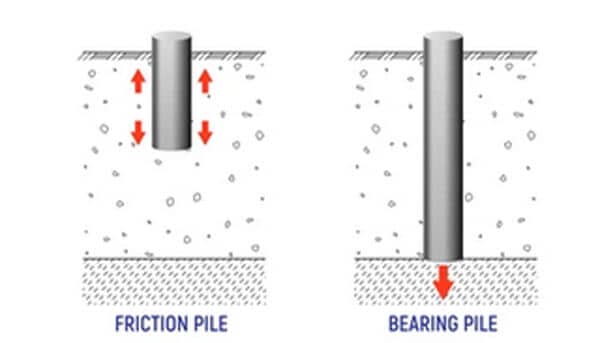
The choice between bearing and friction piles essentially depends on the type of soil encountered in the building foundations and the financial constraints.
Usually bearing piles are the perfect solution, when strong long bearing strata are not so deep. In such a case end bearing piles can effectively transmit the building loads. Bearing piles are also useful in cases when settlements are critical. They play a good role in reducing building settlements.
Additionally, one should also select end bearing piles over friction piles when pouring water pressures are higher or they are more prone to fluctuations.
Similarly, if canals or deep drainage lines exist end load-bearing piles should be used due to the risk of excess pore water pressures that may cause soil settlements. Of course, in cases of soil settlement, negative skin friction arise, which will lead to reduced capacity of friction piles.
Friction piles are useful when the strong strata are very deep and it is becoming economically unfeasible to have end-bearing piles.
In such cases, friction piles can effectively perform the function by resisting the acting load through the skin friction. The use of friction piles would be more effective when clayey soils are encountered. This is because clayey soils have more adhesion coefficient.
Conclusions
To conclude this article was all about friction piles.
They are particularly used in the cases when hard strata are too deep and it is becoming economically unfeasible to use end load bearing piles. Friction piles are most commonly adopted for large structures that have excessive load located on sandy foundations with strong strata lying very deep. The article also gave the formulation for calculating the skin friction resistance of piles.
Lastly, a special of negative skin friction is also discussed. Negative skin friction arises in cases when the soil settles more than the pile and it has a negative effect on pile capacity.
machine to pile head cutting size range 300mm-1200mm
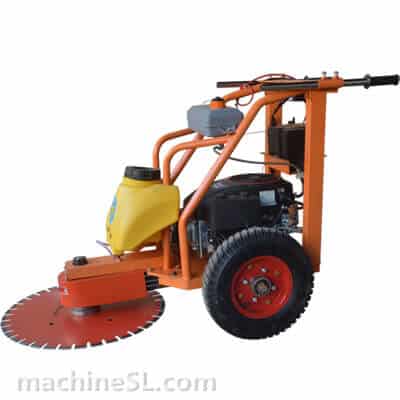
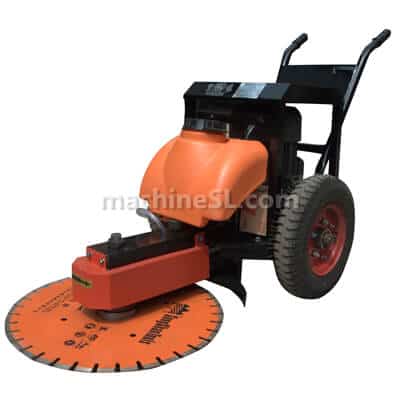
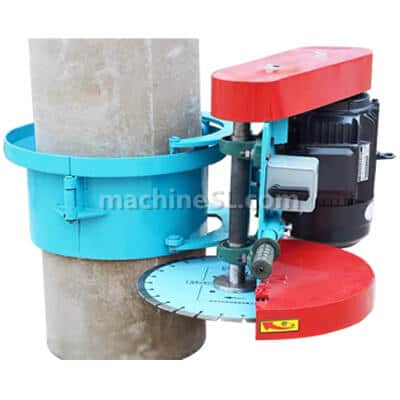
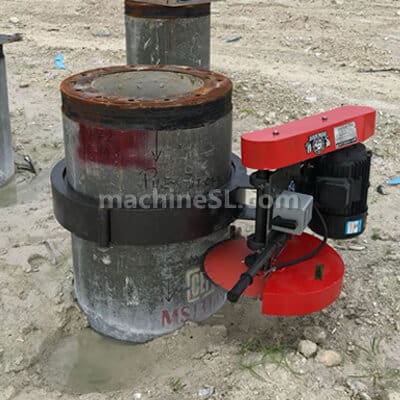
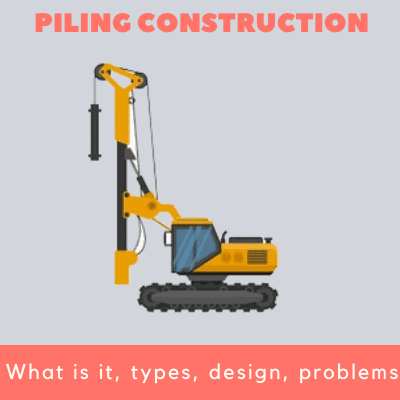
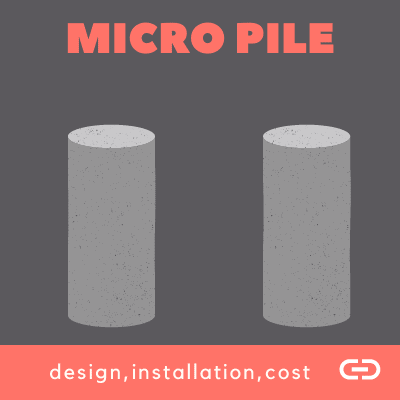
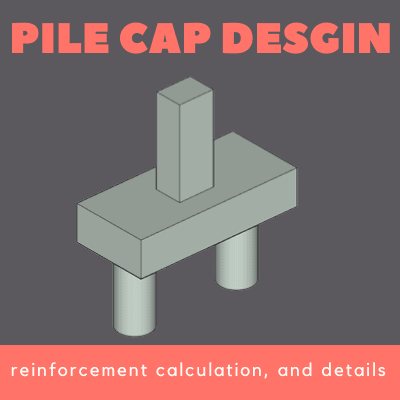
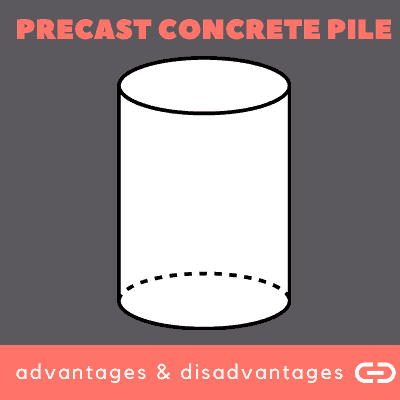
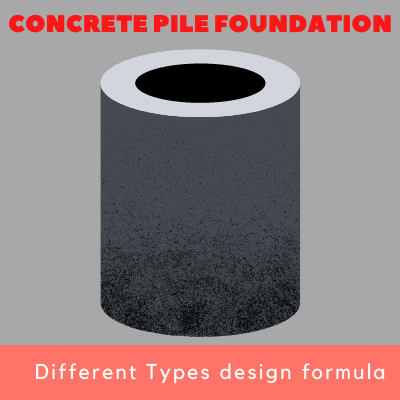
Great read!
thanks